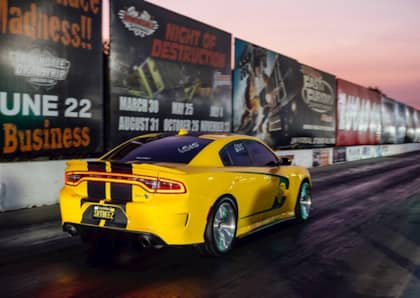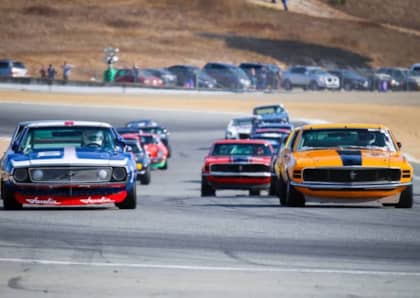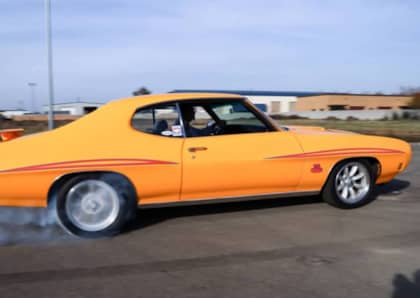'80s and '90s IMSA Racing Built The Wildest Widebody Mustangs And Camaros The World Has Ever Seen
International Motor Sports Association (IMSA) racing gave us some of the wildest widebody muscle cars that the world has ever seen. Kicking off in the early 1970s, IMSA was initially a playground for Chevrolet Corvettes, Porsche 911s, and Shelby Mustangs, each of which came to adopt more and more extroverted aero body work. With increasing numbers of racers infiltrating the series as classes and schedules were shuffled around elsewhere (including an influx of refugees from Trans Am, which had a largely overlapping rulebook), it became a close competition to see who could build the stickiest cars while still abiding by IMSA's original 'no ground effects' rules.
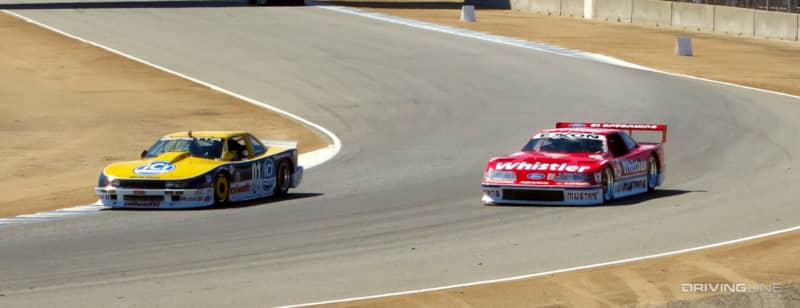
Photo: Benjamin Hunting
It's within this framework that Ford and Chevrolet began to get serious about building advanced race cars on the Mustang and Camaro platforms. By the early '80s, each automaker was competitive in the GTO class, with Ford even pushing the Mustang into the GT Prototype class alongside much more exotic fare. In the process, fans were treated to completely outrageous interpretations of these fabled muscle machines, stretching their DNA across acres of fiberglass, box flares, and towering wings.
Mustang In Name
One of the key aspects that lead to the Mustang and Camaro madness in IMSA racing was the move to allow full tubeframe cars to compete in the series starting in 1980. Freed from the requirement of sticking to stock platforms, Ford and General Motors were able to extend showroom-like fiberglass bodies over whatever chassis proved the best match for the weight and engine displacement restrictions imposed by IMSA stewards.
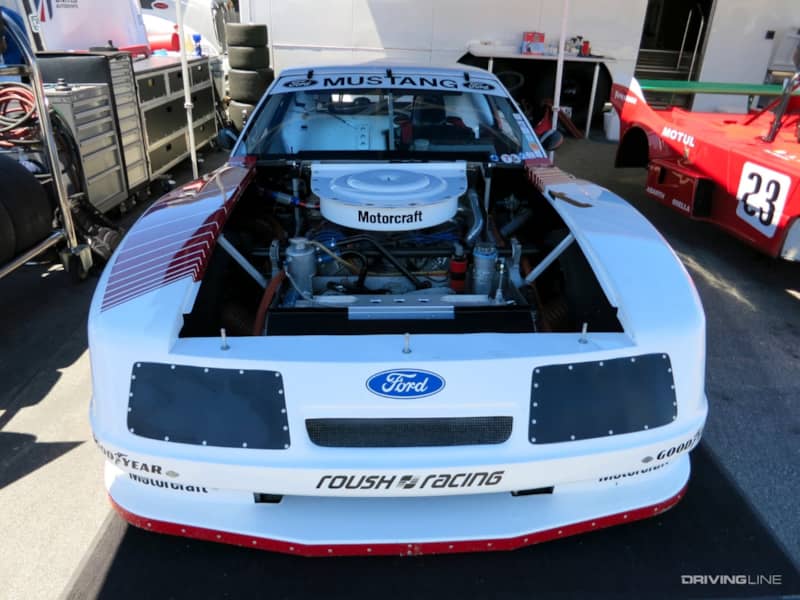
Photo: Benjamin Hunting
Because of how similar Trans-Am and IMSA GT (also known as Camel GT) were at the time, the Blue Oval was able to sprinkle its development budget across both series and get excellent results in each. Right from the beginning, Ford was all-in on both the showroom-look GTO and the more outlandish GTP classes, constructing a series of cars that even touched on the early turbocharged GTX class that preceded GTP. Ford also built widebody Mercury Capri racers during the same period, as it shared its development with the Mustang.
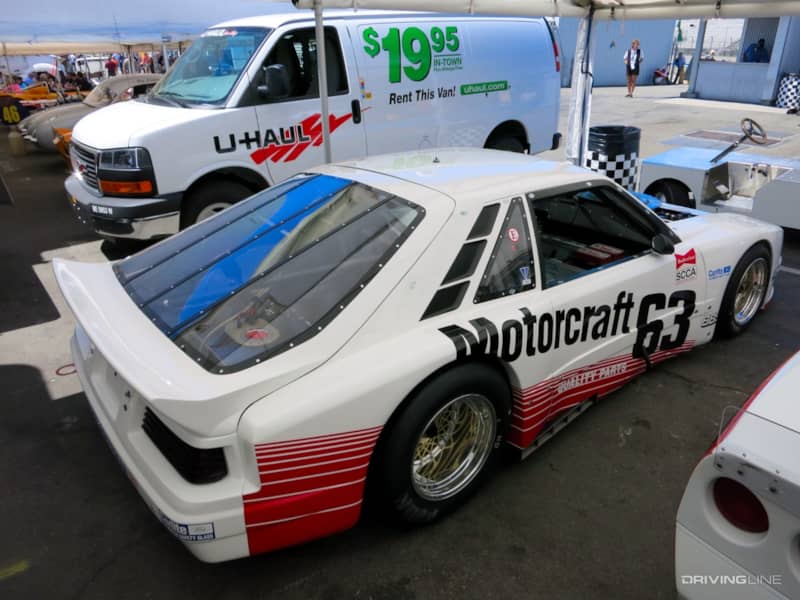
Photo: Benjamin Hunting
Ford Mustang IMSA racers featured a variety of power plants, ranging from aluminum-block V8s for over 550hp to turbocharged four-cylinder engines (1.7-liters in GTX, 2.1-liters in GTP), each with close to 600 horses available. Visually, the GTO and GTX cars resembled the Fox body Mustang as seen through the funhouse mirror of the aerodynamic modifications required to keep the cars from flying off the track (as well as the super-wide body work needed to house the enormous race rubber and pushed-out axles of each vehicle).
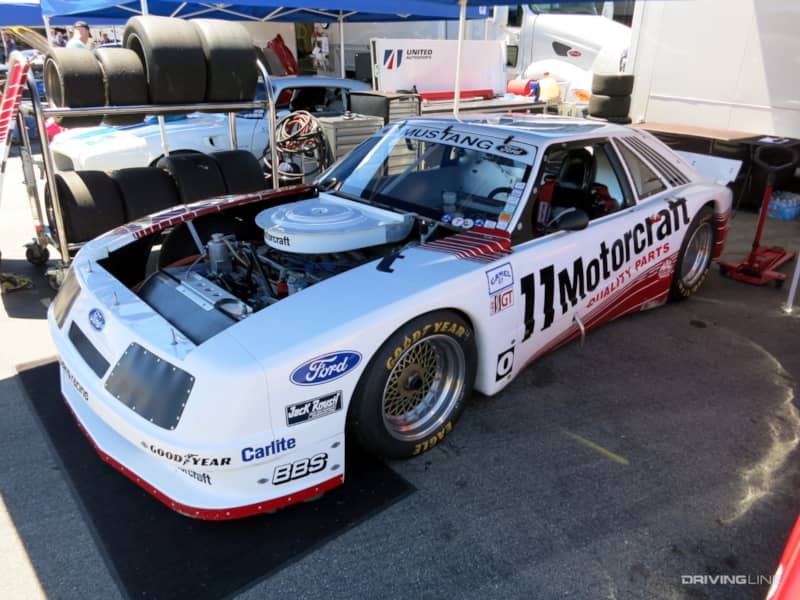
Photo: Benjamin Hunting
The GTP car, on the other hand, looked almost like Ford had built a Corvette and slapped a Mustang banner on the windshield, and it featured the massive wings and wind tunnel-shaped silhouette common to the class.
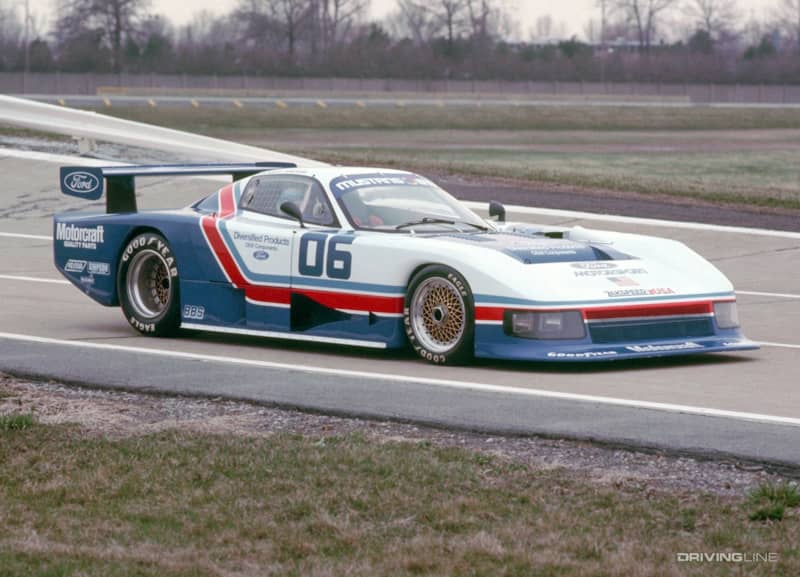
By 1985 Roush had taken over Ford's IMSA program from the company's in-house Special Vehicle Operations, and the results were almost instantaneous: the Mustang GTO won the manufacturer's title, and repeated as champions the following year.
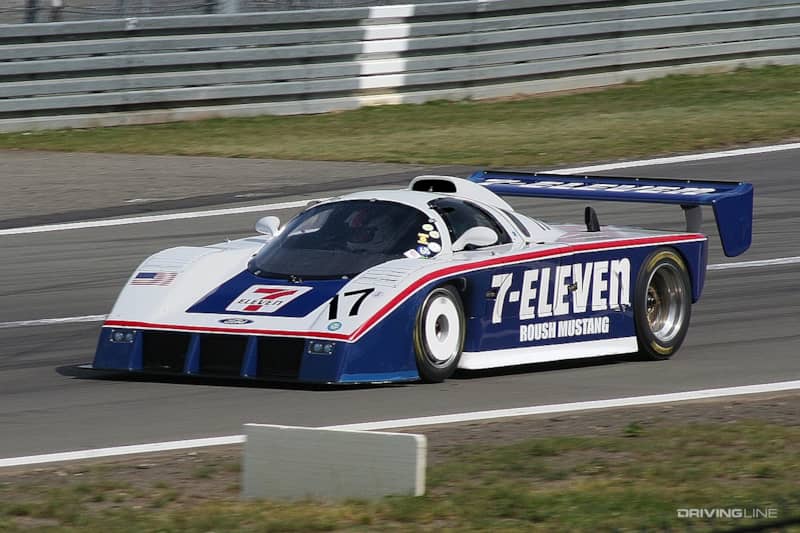
Ford had less success with Roush's Mustang Maxum GTP car in 1987, which had switched from the unreliable 2.1-liter turbo to a V8 that proved no better.
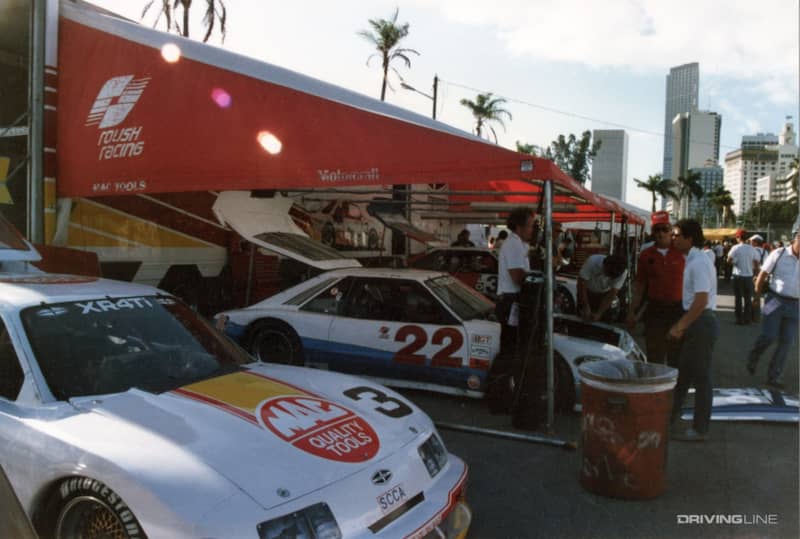
A 2.5L turbocharged four-cylinder eventually found its way under the hood of the last sequence of Fox-based IMSA widebody Mustangs built by Roush in the early '90s. These motors developed a fantastic 950hp on their way to a second place finish in the 1991 driver's championship. The turbo units were later replaced by 650hp V8s for certain races, specifically for long distance slogs where reliability was paramount over outright performance.
Not Quite As Crazy
Chevrolet didn't dive as deep into IMSA with the Camaro, letting the Corvette absorb all of the prototype glory while keeping the Camaro firmly rooted in the GTO class. This fit well with the Camaro's evolution as a racer, building on its success in Trans-Am racing throughout the '70s to give the radically different third-generation model a solid foundation in IMSA.
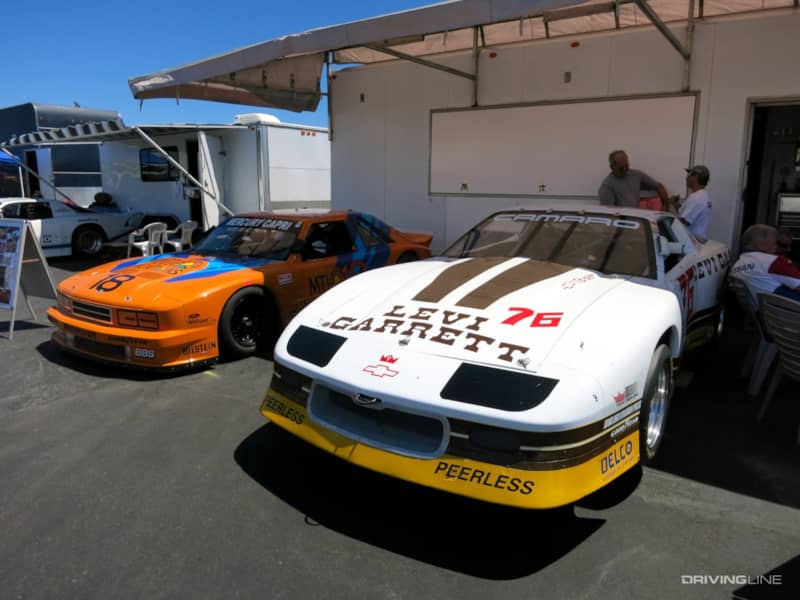
Photo: Benjamin Hunting
As with the Mustang, the key to the Camaro's GTO success lay in its brash visual personality. Introduced in 1982, the third-gen coupe was already a fairly aero-friendly design, but early GTO competition saw it outfitted with an hourglass widebody that was nearly as curvy at the front as it was at the rear.
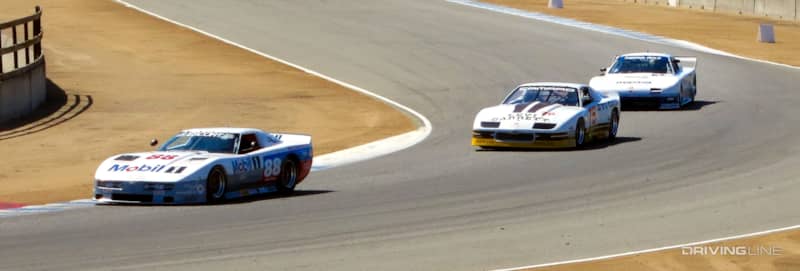
Photo: Benjamin Hunting
Several Camaro entries were also outfitted with rear induction hood scoops that towered above the body work. Built on a tube chassis, Chevrolet's racers relied exclusively on naturally-aspirated V8 power, hovering around the same 550 to 600 horsepower as their Mustang foes.
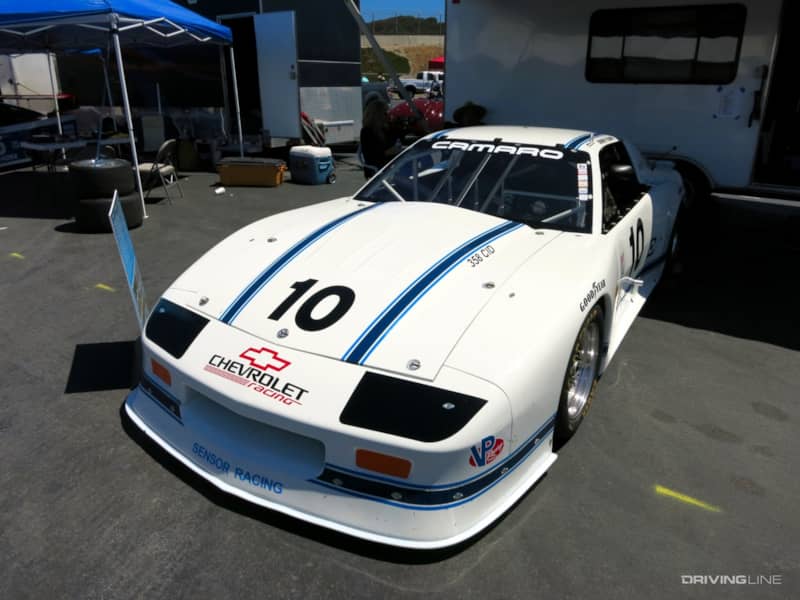
Photo: Benjamin Hunting
As the decade moved forward, IMSA Camaros became sleeker, maintaining the wide proportions but pushing out the entire body along the vehicle's shoulder line, rather than simply punching out fender flares.
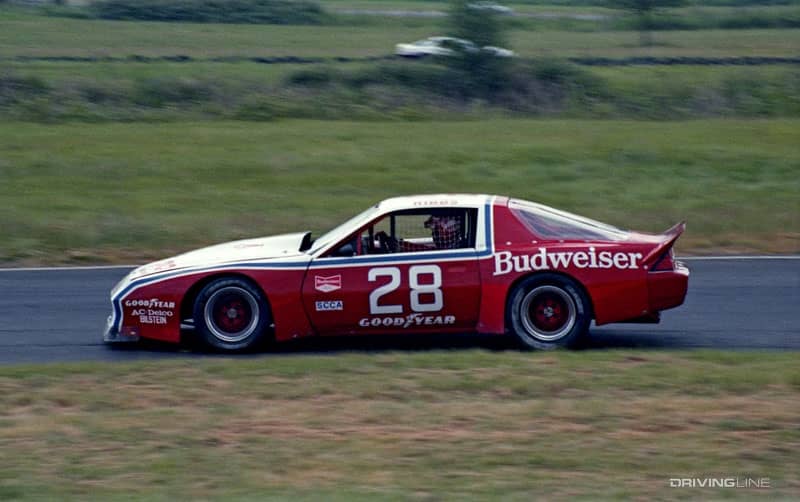
The longer proportions of the vehicle made the IMSA modifications less shocking when lined up alongside their showroom stock counterparts, but there was significant aerodynamic development baked-in to each example.
End Of An ERA
IMSA competition continued well into the '90s, but as automakers began to experiment with the swoops and curves required to improve street performance and boost fuel efficiency (made possible by exotic materials, curved glass for headlights and side markers, and more advanced production techniques), the personality difference between IMSA GTO cars and their factory equivalents was no longer quite as jarring.
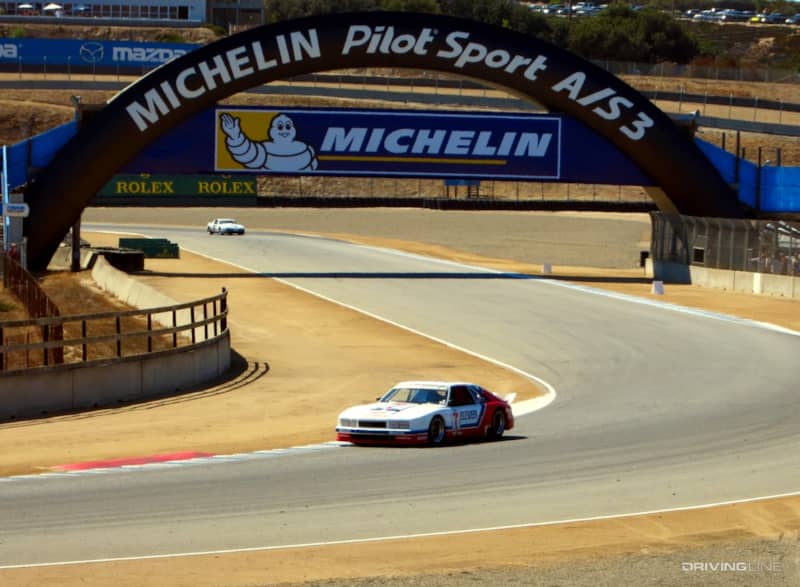
Photo: Benjamin Hunting
Although leftover cars would continue to find success on the track well after the '80s had ended, the era of the wild and wooly IMSA widebodies finally came to a close. Today, these racers can still be seen at reunion and vintage racing events all over the world, where they still draw crowds eager to bask in the spectacle of their larger-than-life fiberglass character.




